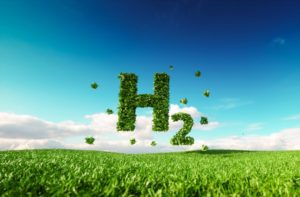by Steve McIntyre, June 30, 2014 in ClimateAudit
Nearly all of the text of this article on an interesting ice core proxy series (James Ross Island) from the Antarctic Peninsula was written in June 2014, but not finished at the time for reasons that I don’t recall. This proxy was one of 16 proxy series in the Kaufman 12K pdf. 60-90S reconstruction.
I originally drafted the article because it seemed to me that the then new James Ross Island isotope series exemplified many features of a “good” proxy according to ex ante criteria that I had loosely formulated from time to time in critiquing “bad” proxies, but never really codified (in large part, because it’s not easy to codify criteria except through handling data.)
Although this series is in the Kaufman 60-90S reconstruction, its appearance is quite different than the final 60-90S reconstruction: indeed, it has a very negative correlation (-0.61) to Kaufman’s final CPS reconstruction. I’ll discuss that in a different article.
Following is mostly 2014 notes, with some minot updating for context.
“Good” Proxies
I’ve articulated with increasing clarity over the years (but present in early work as well) – is that one needs to work outward from proxies that are “good” according to some ex ante criteria, rather than place hope in a complicated multivariate algorithm on inconsistent and noisy data, not all of which are “proxies” for the item being reconstructed. This is based on principles that I’ve observed in use by geophysicists and geologists to combine “good” (high resolution) data with lower quality data.
…
…
by Cap Allon, July 5, 2020 in Electroverse
ABSTRACT
A greenhouse gas is a gas that absorbs and emits infrared radiation.
The primary greenhouse gases in the atmosphere are water vapor, carbon dioxide, methane, nitrous oxide, and ozone. Atmospheric carbon dioxide (CO2) is a nontoxic, colorless, odorless gas.
Water vapor accounts for by far the largest greenhouse effect (90–85%) because water vapor emits and absorbs infrared radiation at many more wavelengths than any of the other greenhouse gases, and there is much more water vapor in the atmosphere than any of the other greenhouse gases. CO2 makes up only a tiny portion of the atmosphere (0.040%) and constitutes only 3.6% of the greenhouse effect. The atmospheric content of CO2 has increased only 0.008% since emissions began to soar after 1945. Such a tiny increment of increase in CO2 cannot cause the 10°F increase in temperature predicted by CO2 advocates.
Computer climate modelers build into their models a high water vapor component, which they claim is due to increased atmospheric water vapor caused by very small warming from CO2, and since water vapor makes up 90–95% of the greenhouse effect, they claim the result will be warming.
The problem is that atmospheric water vapor has actually declined since 1948, not increased as demanded by climate models. If CO2 causes global warming, then CO2 should always precede warming when the Earth’s climate warms up after an ice age. However, in all cases, CO2 lags warming by ∼800 years. Shorter time spans show the same thing–warming always precedes an increase in CO2 and therefore it cannot be the cause of the warming.

…
by P. Homewood, July 5, 2020 in NotaLotofPeopleKnowThat
There has been a wide ranging debate about hydrogen in the last couple of days, so I thought it worthwhile to recap some of the basic facts. Most of these are from the Committee on Climate Change’s Net Zero report last year, otherwise I will provide links.
I have referred to many of these facts before, but they sometimes get lost in the fog of technical debate. If anybody disagrees with these facts, please explain where the CCC went wrong.
Production
There are essentially two methods of producing hydrogen:
1) Steam reforming
This process typically usually uses natural gas as the feedstock, but produces CO2 as a by-product. Therefore, for the process to be “low carbon”, carbon capture and storage would be necessary. Unfortunately even then not all of the CO2 is captured. Allowing for upstream emissions as well, the CCC estimate that the process will only reduce emissions by 60 to 85%, compared to burning natural gas instead.
The cost of producing hydrogen via steam reforming with CCS is estimated to be triple the current wholesale price of natural gas (ie before adding distribution costs).
2) Electrolysis
The CCC explain why electrolysis can only offer a limited contribution:
…

La géologie, une science plus que passionnante … et diverse


